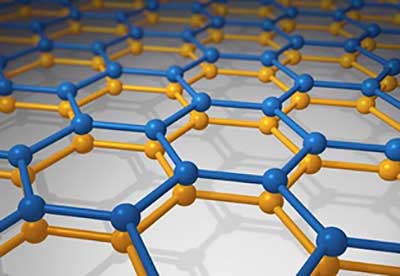Relevance: GS-3 : Science and Technology- developments and their applications and effects in everyday life.
Key Phrases: Twisted Bilayer Graphene, Insulators, Superconductors, Moire Patterns, Nematic Ordering, Charge Density Wave States, Fringe like Patterns, Hexagonal Lattice, Orbital Angular Momentum, Intrinsic Spin, Spin-Orbit Coupling
Why in News?
- Wide variety of phases of electrons have been observed in Twisted bilayer graphene. which arouse the interest of physicists, such as insulators, superconductors, and even phases that imitate liquid crystals, such as nematic ordering.
- It may possess a new phase that exhibits what is called charge density wave states.
What is Twisted Bilayer Graphene ?
- This is made by placing two layers of graphene on top of each other such that they are aligned well, and then twisting one layer so that it makes a well-calibrated, known angle with respect to the former.
- When such a twist is given, the lattice shows what is called moire patterns.
- Moire patterns are wavy Fringe-like patterns that we see, for example, when two layers of synthetic fabric overlap and move with respect to each other.
Do you know about Graphene?
- Graphene is a two-dimensional material comprising a single layer of carbon atoms arranged in a hexagonal lattice.
- Stacks of graphene layers can make up graphite.
- Graphene possesses several interesting properties by itself, and, moreover, it can be combined with other materials to form useful devices.
Unique Properties of Twisted Bilayer Graphene:
- The second layer was twisted with respect to the first by a small angle between one and two degrees.
- Then they made a third layer of tungsten diselenide to complete the device.
- Tungsten diselenide shows a property called spin-orbit coupling, which is a link between the intrinsic spin and the orbital angular momentum of the electrons.
- Adding this layer, they showed, endowed the material with unique properties and created the charge density wave states.
- Normally in a conductor, the charge carriers, for example electrons, are free to move anywhere in the conductor. But here, some areas are restricted and the electrons can move only in the allowed regions.
- Just like there are variations in particle density in a sound wave, these states show a wave-like variation in the charge density.
- Interlayer conductivity of 2-D van der Waals structures such as graphene/graphene or graphene/graphite junctions decreased monotonically with an increasing twist angle.
Characteristics:
1. Super Conduction and Insulation
- Superconductivity existed in bilayer graphene where one layer was rotated by an angle of 1.1° relative to the other, forming a moiré pattern,
- It acted as an insulator instead of a conductor under a magnetic field.
- Turning the superconductive paths on and off by application of a small voltage differential.
Benefits of Tunable Superconductivity:
- Twisted graphene has a much lower critical temperature (Tc) than other superconductive materials, only around 1 K.
- In superconductive materials, the critical temperature is when they become superconductive. This is the same as aluminum, a conventional superconductor that has been known for some time and is described well by the Bardeen-Cooper-Schrieffer (BCS) theory.
- Twisted graphene has around 10,000 times less charge-carrier density than aluminum. A low charge-carrier density means that the pairing mechanism that makes electrons join up and condense into a superfluid is more constrained i.e..a limited number of available electrons to pair up.
- This means that twisted graphene, which becomes superconductive at a low critical temperature despite a low charge-carrier density, is one of the most strongly correlated superconductors .
- Its electronic properties are more similar to superconductors with high critical temperatures, such as cuprates.
2. Heterostructures
- Heterostructures in the form of atomically thin sheets that are held together by the weak Van der Waals forces.
- Unique orbital ferromagnetic effects were produced at a 1.17° angle, which could be used to implement memory in quantum computers.
3. Electron Puddling
- The quantum and physical effects of the alignment between the two layers appears to create "puddle" regions which trap electrons into a stable lattice.
- Because this stable lattice consists only of electrons, it is the first non-atomic lattice observed and suggests new opportunities to confine, control, measure, and transport electrons.
4. Ferromagnetism
- A three layer construction, consisting of two layers of graphene with a 2-D layer of boron nitride, has been shown to exhibit superconductivity, insulation and ferromagnetism. This was achieved on a single graphene flake.
Challenges in Fabricating the Material:
- To have absolutely clean samples .
- A precise control over the angle of twist.
- The twist angle to be differed only in the second decimal place .
Conclusion:
- While it is still early to talk of applications, it is believed that these devices may reveal when studied deeper, excitations like the Majorana modes, or exotic magnetic phases, which will be useful in quantum computation.
- Even without that, the discovery that these may hold charge density wave states has made them unique and exciting as a subject of physics research.
Source: The Hindu
Mains Question:
Q. Wide variety of phases of electrons have been observed in Twisted bilayer graphene exhibiting unique properties and characteristics. Explain (250 words).









